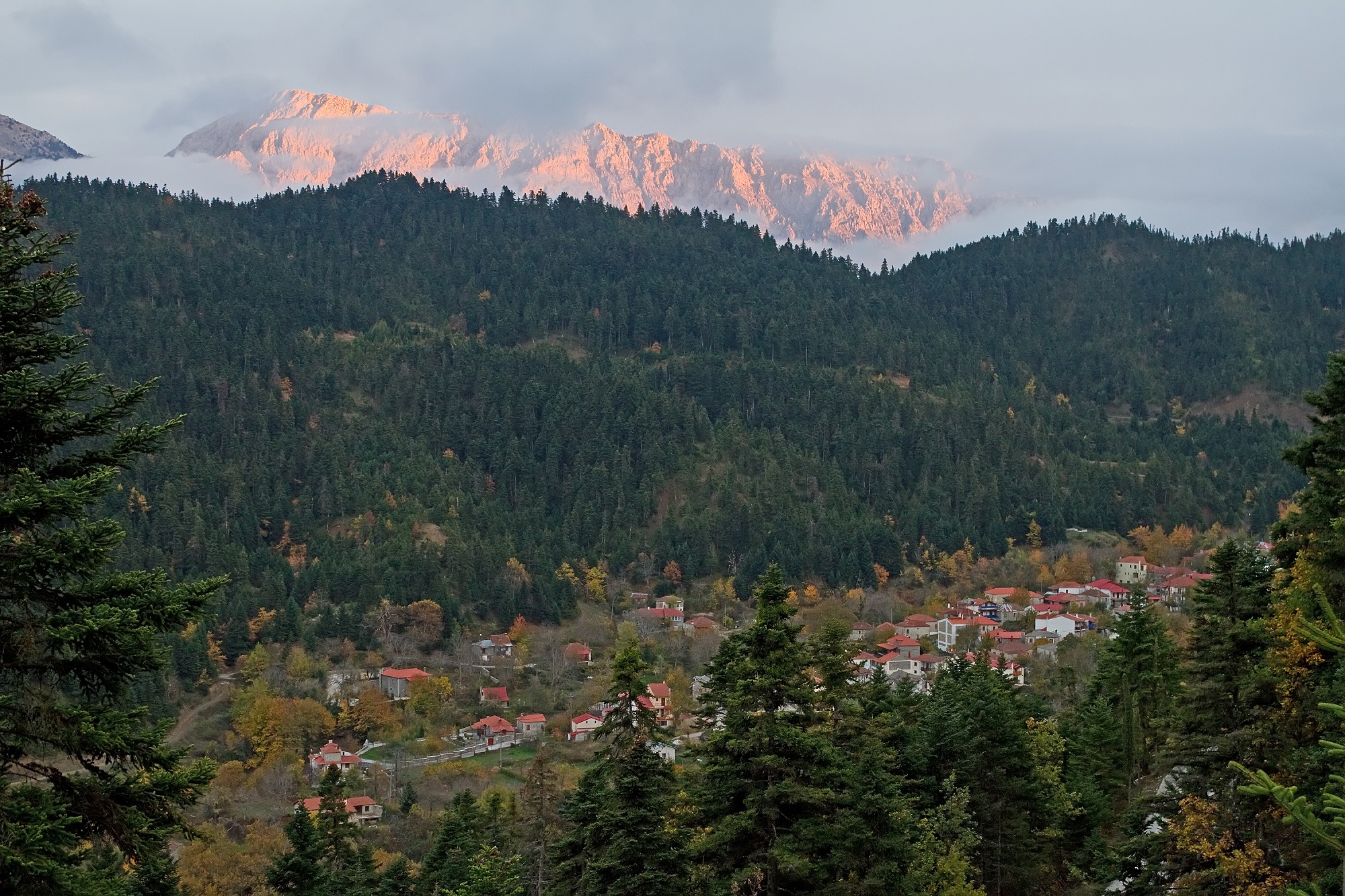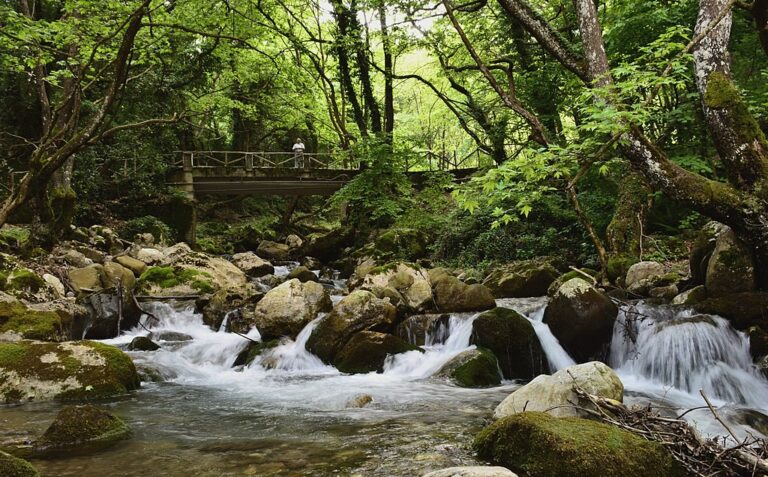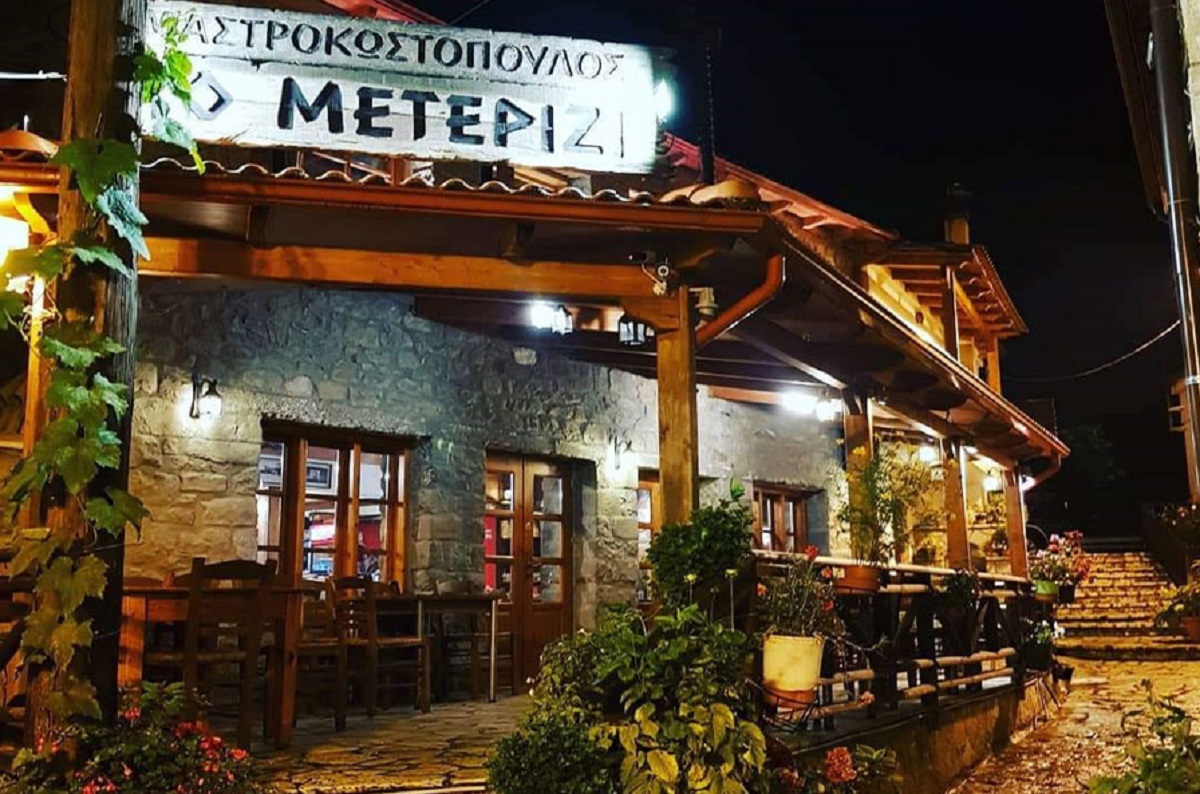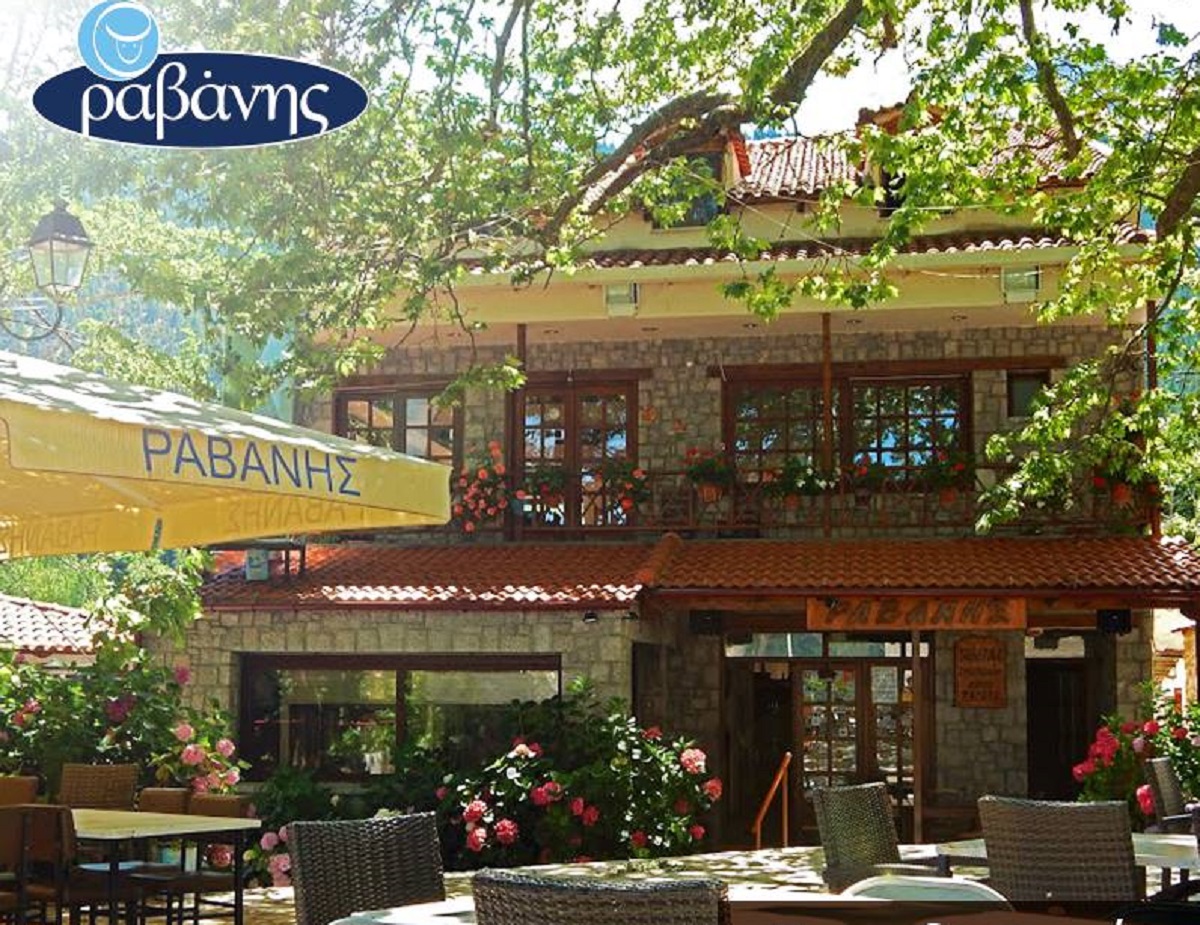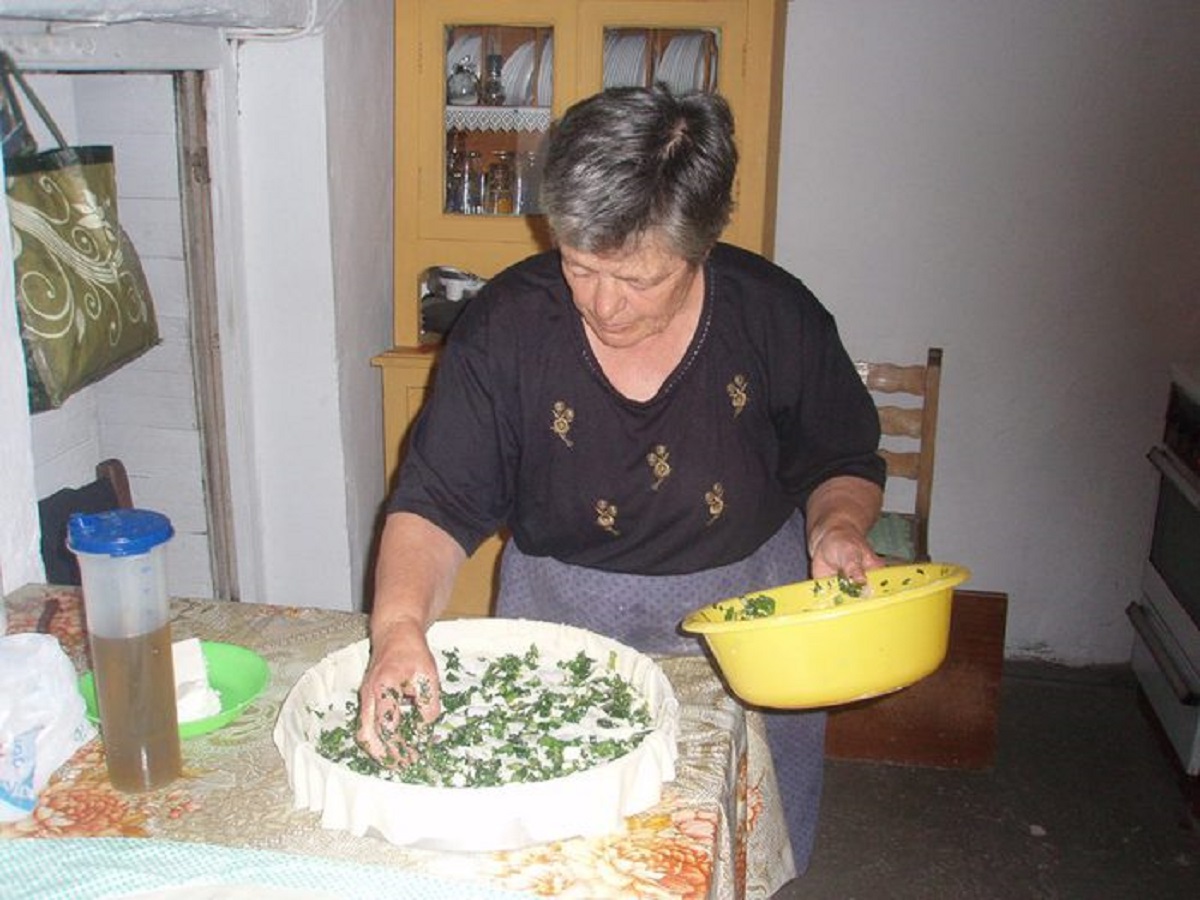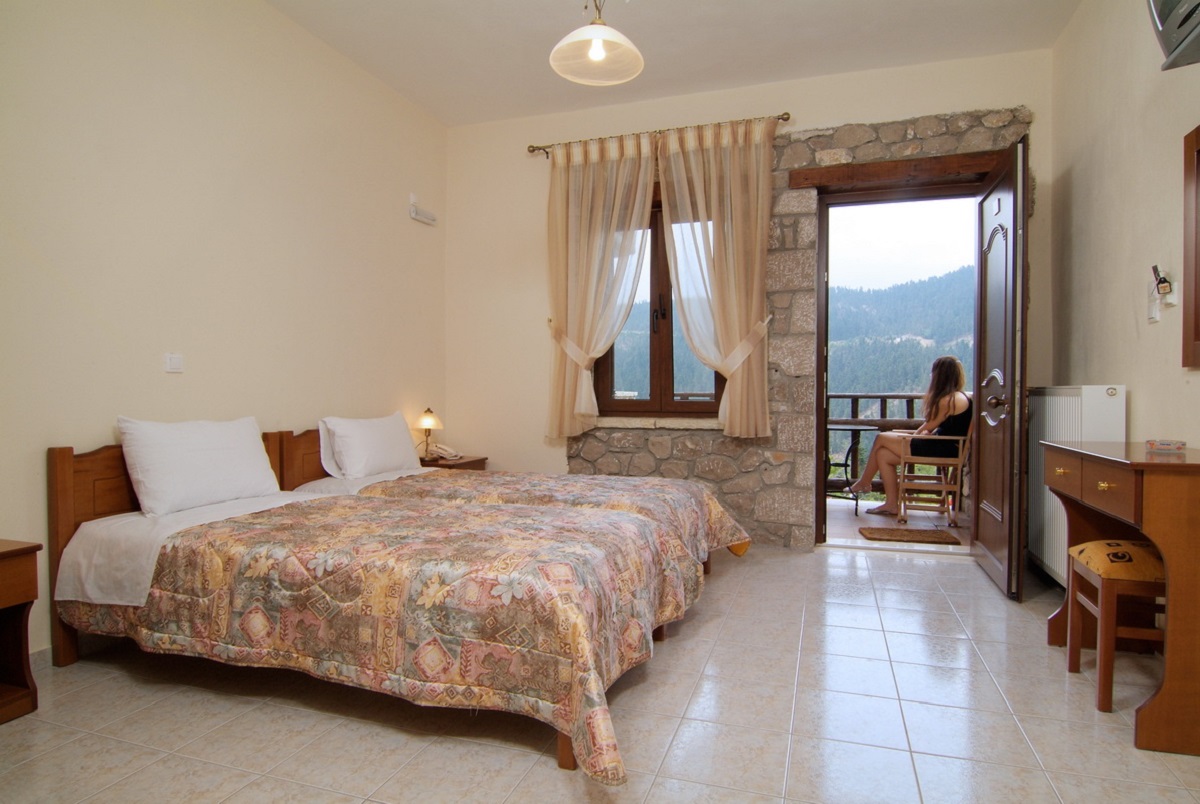Athanasios Diakos, in mountainous Fokida, certainly has its own history – as is clear by its name (the name of a hero of the Greek War of Independence). But it is also a great example of a village that has managed, with time, to add to its identity due to the renowned taverns that have turned it into a destination that many consider a small paradise for foodies.
According to the 2011 census, the village has 518 residents but most of them only come in the summer – in the winter, when the herds are moved to lower areas, only around 20 residents remain. The village is built on the eastern slopes of the Vardousia mountains, in Fokida, at 1,050 m altitude, and is an old village, whose origins are lost in time, going back to the Ottoman rule, when it was called Ano Mousounitsa.
It officially got the name it has today in 1959, as, according to the writings of fighter Christoforos Perraivos (1836), historian Ioannis Filimon (1861) and Athanasios Diakos’ comrade Ioannis Mamouris (1865), it is believed that the famous hero of the 1821 war was from the village.
The village of Athanasios Diakos comes alive in the spring and summer months when most expats come to spend their holidays on the mountain. After all, it’s a village that is easily accessible from Athens, it’s just 232 km away, so you can reach it after a drive of about 3 hours and 40 minutes. You can follow two different routes there, the shorter one being the one by Stromi and Mousounitsa (follow the signs).
However, it’s also a charming destination in the wintertime, as due to its altitude it often has snow, and so the forest acquires “alpine” characteristics. If you intend to visit in the winter, for a quiet, mountainous escape, make sure to see the weather reports in advance and get information on accessibility and on the stores and restaurants in the village that are open.
3 things worth doing if you’re in Athanasios Diakos
Walk around the village
Apart from the great taverns, Athanasios Diakos is at a great location, surrounded by forests (firs, chestnuts, walnuts and oaks), while there’s also a tributary of river Mornos nearby. The fact that it’s a great destination for walking, guarantees that you’ll be able to see all of the village’s beauties. It has great streets with founts, while at the back of the village there is a path that leads to a gorgeous spot full of trees, next to the stream.
The centre of activity is the large cobbled square with the perennial plane trees (over 300-years-old) where the statue of Athanasios Diakos stands, that was put up there in 1922 by the Nikolaos Plastiras government, in honour of the 100 years from the hero’s death, and also to honour the villagers who were members of the legendary 5/42 Evzoni regiment that gave the Turkish such a hard time during the Asia Minor wars, that they called it “Şeytan asker” (the Satan’s army).
Athanasios Diakos is also the starting point of trails (for experienced hikers) that reach the tops of the Vardousia mountains and the local refuges (one at 1,750 m altitude and another at 2,014 m). The less experienced hikers can easily reach the Stavros col, a 3-hour-hike from the village, to enjoy the view of the surrounding mountains and of the Mousounitsa valley. Finally, the European E4 trail passes just outside the village.
Visit the Metamorfosi tou Sotiros church
It’s in the main square, across Athanasios Diakos’ statue, it’s made of stone and was built in 1872. In its interior you’ll admire the impressive stained-glass windows, while outside you can admire the bell tower’s clock.
On August 6, the date when the Orthodox Church celebrates the Metamorfosi tou Sotiros (Transfiguration of Christ) a large festival takes place, famed throughout Fokida. According to the older villagers, in the past, the festivities lasted 3 days and nights.
Visit the Athanasios Diakos museum
The museum first opened in 2009 in the renovated house over the river that is believed to be Athanasios Diakos’ home – his real name seems to be Massavetas. Every year, during the last weekend of July, the village organises the “Diakia” festival: cultural events honouring the 1821 hero, who had a martyr’s death in the beginning of the Revolution.
The exhibition on display at the museum, aims to show the historic and social context in which Athanasios Diakos grew up. As we read on the museum’s website, most objects are original and have either been bought or were donated to the museum. The exhibits include military gear (19th century), lithographs (19th century), stamps and documents (20th century) as well as a replica of Diakos’ gun and costume.
Coffee and food
Athanasios Diakos has few establishments, but they are all of great quality. After all, they are the reason the village has become a destination. They all operate as both coffee shops and taverns.
“To Meterizi” first opened in 1950 as a cobbler’s, a coffee shop and a grocery store, and now the third generation of the Mastrokostopoulos family runs it. It’s a renovated tavern, ideal for meat lovers: spit roast lamb, goat stew and lamb pluck cooked in wine are a few of the specialties, but depending on the season, there will also be game options.
The stone-built tavern “Ravanis” in the centre of the village is equally old and also serves their famous homemade ice cream in the summer and yogurt with great spoon sweets (traditional sweet preserves) in the fall (they are open between May and October). They also serve great beef patties, lamb chops, hand-cut fries and bread they make themselves.
The café-tavern “O Sotiris” has also been around for half a century and it’s ideal both for a coffee with dessert, as well as for ouzo with meze, or lunch. You must absolutely try the homemade spinach, courgette and cheese pies that are made following family recipes of passed on from generation to generation.
Where to stay
If you’re not visiting for a daytrip but want to spend more time in the quiet mountainous landscape, the traditional, stone-built guesthouse “To Meterizi” (tel. 0030 22650-63201) opened in 2006 and overlooks a wooded slope, while it has a panoramic view of the village. Another great choice is the other traditional guesthouse “Ravanis” (tel. 0030 22650-63214), but it’s closed in the winter. On the contrary, the hotel “Vardousia”, surrounded by fir trees (22650-63148) with rooms with mountain view and outdoor pool for the summer months, remains open.



